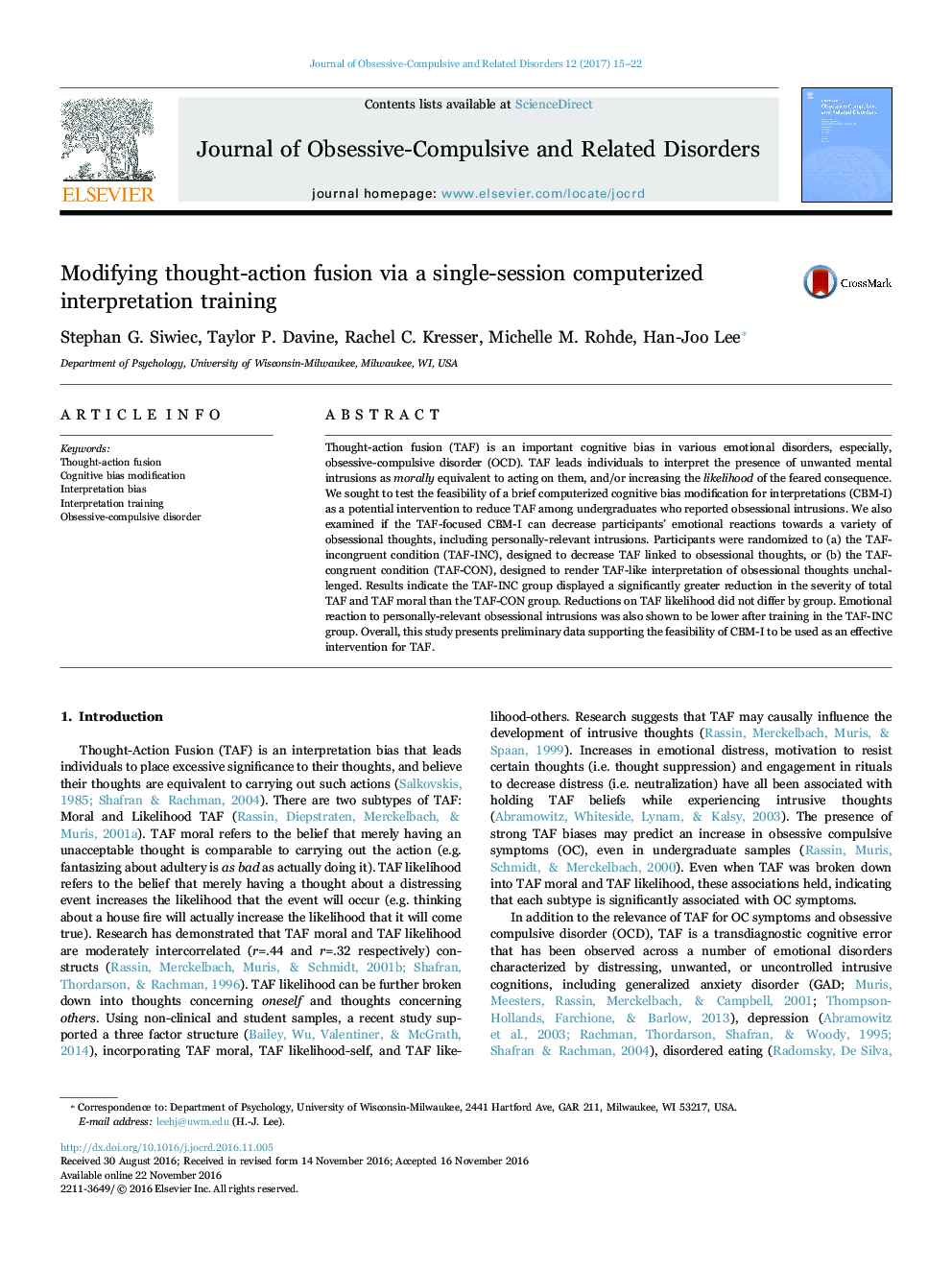| Article ID | Journal | Published Year | Pages | File Type |
|---|---|---|---|---|
| 5039287 | Journal of Obsessive-Compulsive and Related Disorders | 2017 | 8 Pages |
â¢We tested cognitive bias modification for thought-action fusion (TAF) biases.â¢Brief cognitive bias modification successfully reduced overall TAF severity.â¢Reductions were more pronounced for moral than likelihood TAF.â¢Negative emotional reactions to idiographic obsessions were also reduced.â¢Our data support the potential utility of the intervention to directly reduce TAF.
Thought-action fusion (TAF) is an important cognitive bias in various emotional disorders, especially, obsessive-compulsive disorder (OCD). TAF leads individuals to interpret the presence of unwanted mental intrusions as morally equivalent to acting on them, and/or increasing the likelihood of the feared consequence. We sought to test the feasibility of a brief computerized cognitive bias modification for interpretations (CBM-I) as a potential intervention to reduce TAF among undergraduates who reported obsessional intrusions. We also examined if the TAF-focused CBM-I can decrease participants' emotional reactions towards a variety of obsessional thoughts, including personally-relevant intrusions. Participants were randomized to (a) the TAF-incongruent condition (TAF-INC), designed to decrease TAF linked to obsessional thoughts, or (b) the TAF-congruent condition (TAF-CON), designed to render TAF-like interpretation of obsessional thoughts unchallenged. Results indicate the TAF-INC group displayed a significantly greater reduction in the severity of total TAF and TAF moral than the TAF-CON group. Reductions on TAF likelihood did not differ by group. Emotional reaction to personally-relevant obsessional intrusions was also shown to be lower after training in the TAF-INC group. Overall, this study presents preliminary data supporting the feasibility of CBM-I to be used as an effective intervention for TAF.
